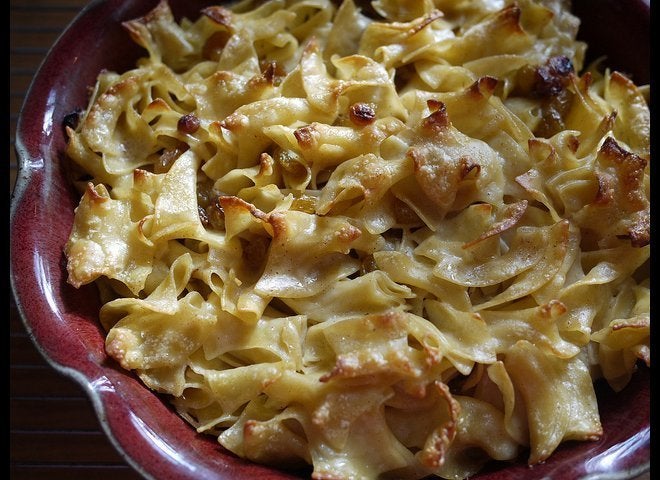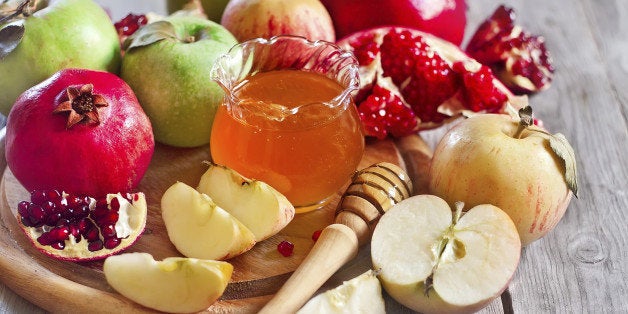
From soft challah bread to sweet pomegranate seeds, every item that appears on the Rosh Hashanah table contains an ancient significance.
The Jewish New Year is celebrated by greeting one another with the words shana tovah u'metukah, Hebrew for "a good and sweet new year!" As a result, the table is very deliberately filled with food that reflects an appetite for happy, prosperous days to come.
The Huffington Post spoke with Naomi Ross, an instructor at the Brooklyn-based Center for Kosher Culinary Arts and founder of Jewish Cooking Concepts, to explain the spiritual significance of the foods that appear on the Rosh Hashanah table.
Round Challah Bread 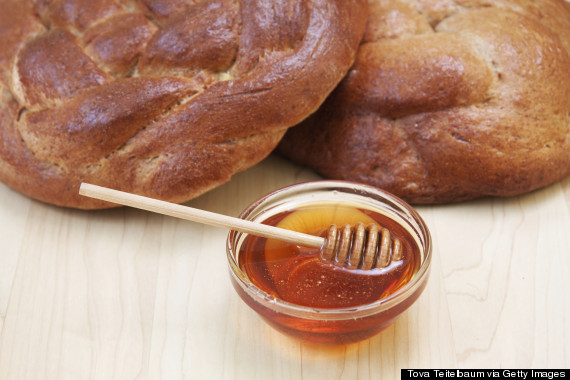
A festive Jewish meal wouldn’t be complete without having bread on the table, according to Naomi Ross. This is why challah, a braided egg bread, makes an appearance at every Shabbat dinner. The chef considers the table to be like an altar and the bread almost like a sacrifice. Traditionally, Ross says sacrifices were dipped in salt. During the month of Tishrei, which begins with Rosh Hashanah, the bread is dipped in honey to symbolize a prayer for sweet things to come in the new year. Challah is round on Rosh Hashanah, recalling the cyclical nature of the year. It is also symbolic of a crown, alluding to the desire to crown G-d as king.
Recipes:
The Ultimate Challah Bread
Mimi Wilhem's Challah Recipe
Apples With Honey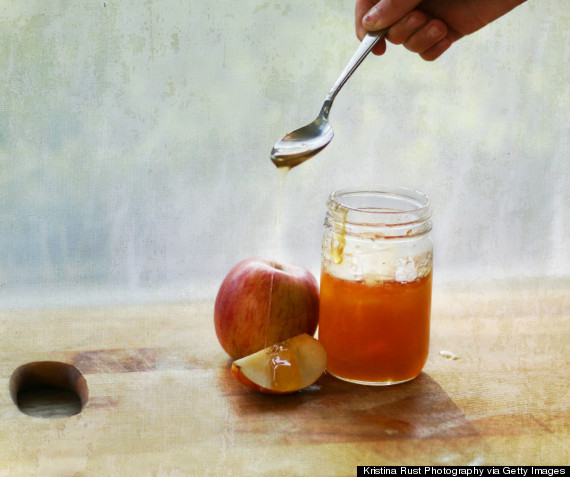
Ross says many Jews consider apples to be a perfect fruit--beautiful to the eye, the smell, and delicious to eat. “Apples are mesmerizing to all the senses,” Ross explains. The Midrash, a commentary on the Hebrew Scriptures, describes the Garden of Eden as having the sweet scent of an apple orchard. When Isaac greets his son Jacob, he exclaims:
"See, the smell of my son is as the smell of a field which the LORD hath blessed." Genesis 27:27
The biblical commentator Rashi explained that Isaac was referring to a field of apples.
The apples are dipped in honey during Rosh Hashanah for added sweetness.
Recipes:
The Best Apple And Honey Pairings
Butter Apple Cake
Rosh Hashanah Honey Cake
Fish Head
Both the body and head of a fish are symbolic for Rosh Hashanah. Fish swim in schools and breed in plenty, and as a result, have been traditionally been seen as representations of abundance, Ross says. During the meal, participants take a piece of fish and say a prayer asking G-d to make them fruitful like the fish. The fish head is prized over its tail, used to symbolize diving into the new year with strength and not with weakness.
"And the LORD will make thee the head, and not the tail; and thou shalt be above only, and thou shalt not be beneath; if thou shalt hearken unto the commandments of the LORD thy G-d, which I command thee this day, to observe and to do them." Deuteronomy 28:13
While gefilte fish is traditional, Ross says any kosher fish that is readily available is a "must have" at the New Year table.
Recipes:
Fish Balls in Tomato Sauce
Gefilte Fish
Carrots, Leeks, And More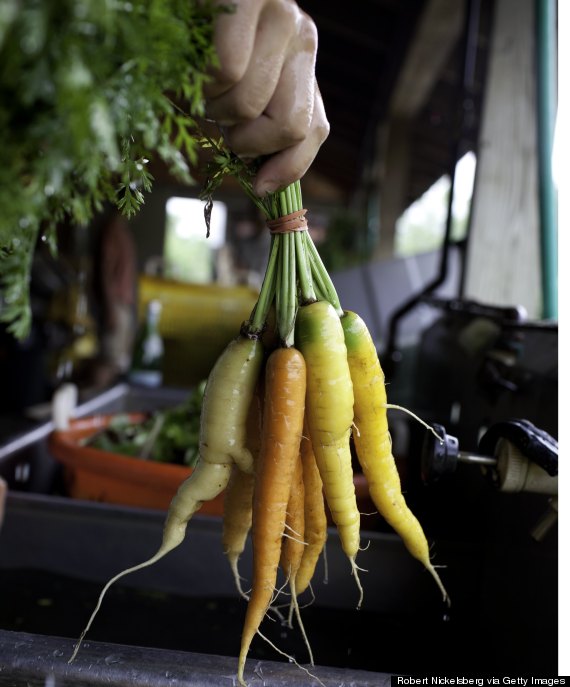
Some foods are treasured because they are a play on words, meaning the word for the food sounds like something else you’d want to wish for in the new year. In Hebrew, the word for carrots is gezer, which sounds similar to the word for decree, which is gazar. “We use that as a supplication that any evil decree against the Jewish people will be torn up and that our good merits will be pronounced before G-d,” Ross said. In a similar vein, some eat leeks, or karsi, at the dinner table. Karsi sounds like the word kares, which means to cut off or destroy. The prayer is that any enemies will be destroyed. Depending on the language spoken around the dinner table, other foods based on word associations may come into play--like fenugreek, gourds, beets, or fresh dates.
Recipes:
Honey Roasted Carrots With Thyme
Carrot, Parsnip, Beet And Sweet Potato Tzimmes
Caramelized Squash & Pomegranate Salad with Creamy Apple Vinaigrette
New Fruits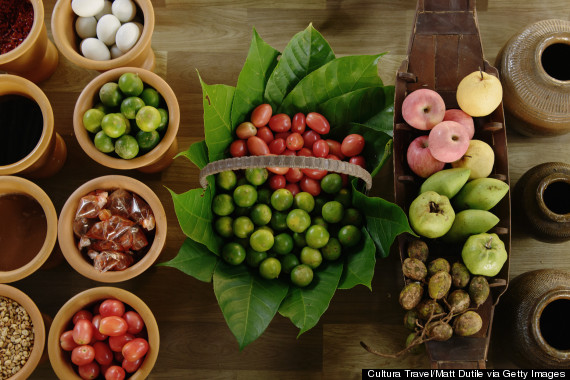
New fruits appear on the table during the second night of Rosh Hashanah, so that families can hear the shehecheyanu blessing.
Blessed are You, L-rd our G-d, King of the Universe, who has granted us life, sustained us and enabled us to reach this occasion.
This particular blessing is typically said in appreciation for new things, ranging from a valuable new dress for the holidays to a new child in the family. Since the prayer was already said on the first night of Rosh Hashanah, new fruits allow families to recite the prayer on the second night. The blessing can only be said on ripe fruits, not dried ones, according to Chabad.
The global market has made it easier for people to purchase tropical fruits, so chefs are always on the hunt for the next big thing. "People are looking for exotic fruit they haven’t had before," Naomi Ross said. Some families are now choosing starfruit, lychee, longan, rambutan, or passionfruit, while others just search for fruits that have newly come into season in their region.
Pomegranates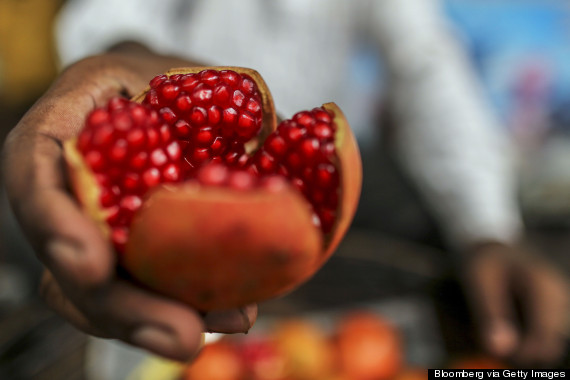
Pomegranates are a popular "new fruit," even though they were well-known throughout the Mediterranean region during Biblical times. The pomegranate designs decorated the High Priest's robes in Exodus 28:33–34, as well as columns in King Solomon's temple.
"Thy lips are like a thread of scarlet, and thy mouth is comely; thy temples are like a pomegranate split open behind thy veil." Song of Songs 4:3
The hope is that the participants’ merits will increase just like the pomegranate seeds. “There’s actually an idea that there are 613 seeds in a pomegranate to correlate with the 613 commandments of the Torah,” Ross said. “I don’t know if that’s numerically accurate, but the multitude of the pomegranate seeds represents the good deeds of the commandments."
Recipes:
Seasonal Salad With Pomegranate Vinaigrette Pomegranate Carrots With Leeks Kale-Pomegranate Salad with Almond Halva Dressing
Shana tova!

